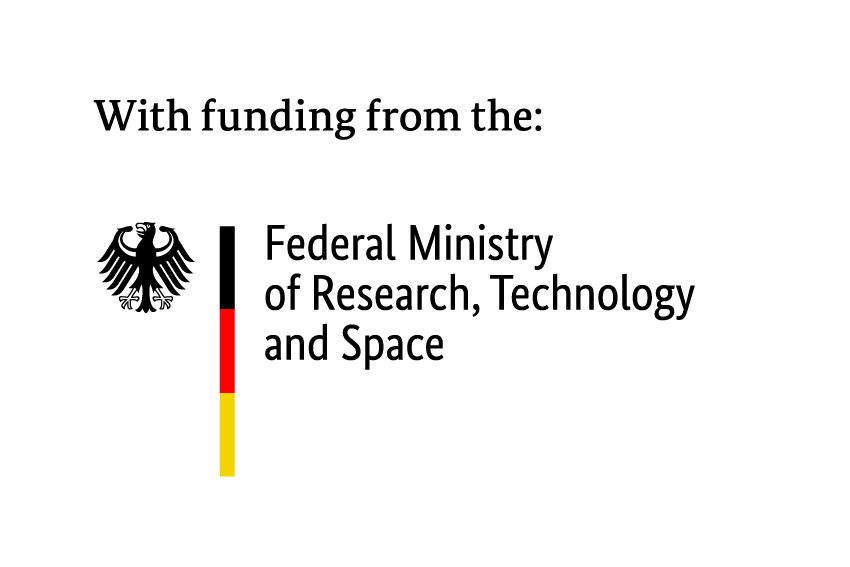Lecture Series: Change of Date – Sabina Leonelli

The lecture “What Role for History and Philosophy of Science in STS? Critical Engagements with Empirical Inquiry” by Sabina Leonelli, part of our Lecture Series Expanding Science and Technology Studies in the winter semester 2024/25, will take place on Tuesday, January 21, 2025 instead of Wednesday, January 22, 2025.
To take part either online or in presence, please write a short email to events@khk.rwth-aachen.de.
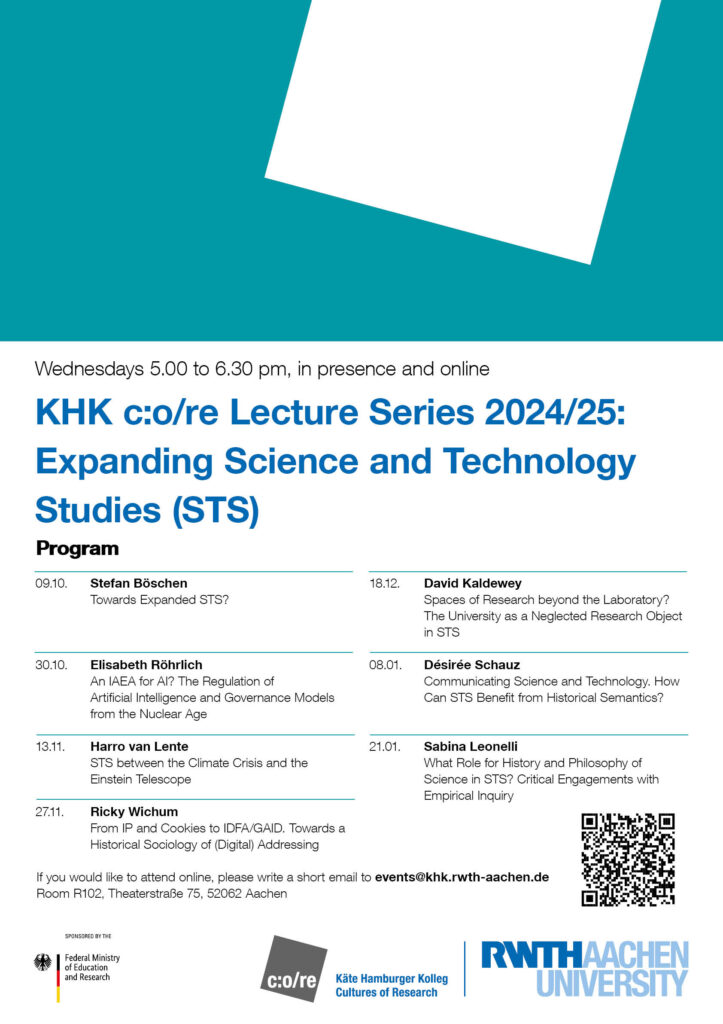
Can nuclear history serve as a laboratory for the regulation of artificial intelligence?
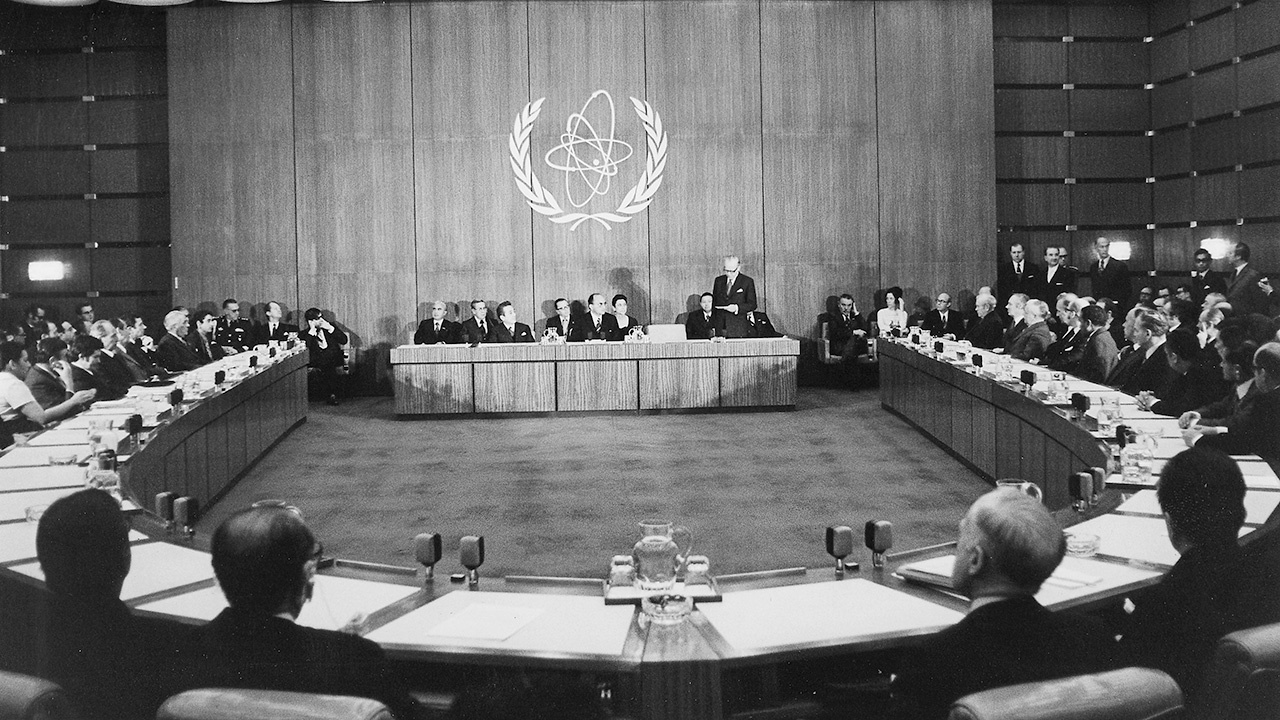
ELISABETH RÖHRLICH
Artificial intelligence (AI) seems to be the epitome of the future. Yet the current debate about the global regulation of AI is full of references to the past. In his May 2023 testimony before the US Senate, Sam Altman, the CEO of Open AI, named the successful creation of the International Atomic Energy Agency (IAEA) a historical precedent for technology regulation. The IAEA was established in 1957, during a tense phase of the Cold War.
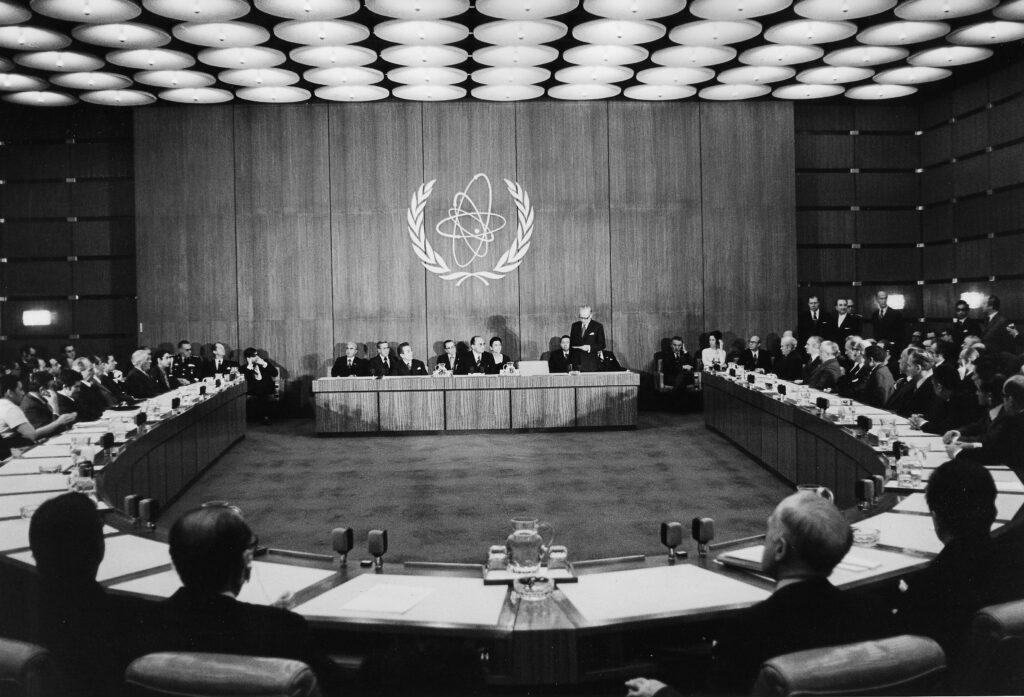
Calls for global AI governance have increased after the 2022 launch of ChatGPT, OpenAI’s text-generating AI chatbot. The rapid advancements in deep learning techniques evoke high expectations in the future uses of AI, but they also provoke concerns about the risks inherent in its uncontrolled growth. Next to very specific dangers—such as the misuse of large-language models for voter manipulation—a more general concern about AI as an existential threat—comparable to the advent of nuclear weapons and the Cold War nuclear arms race—is part of the debate.
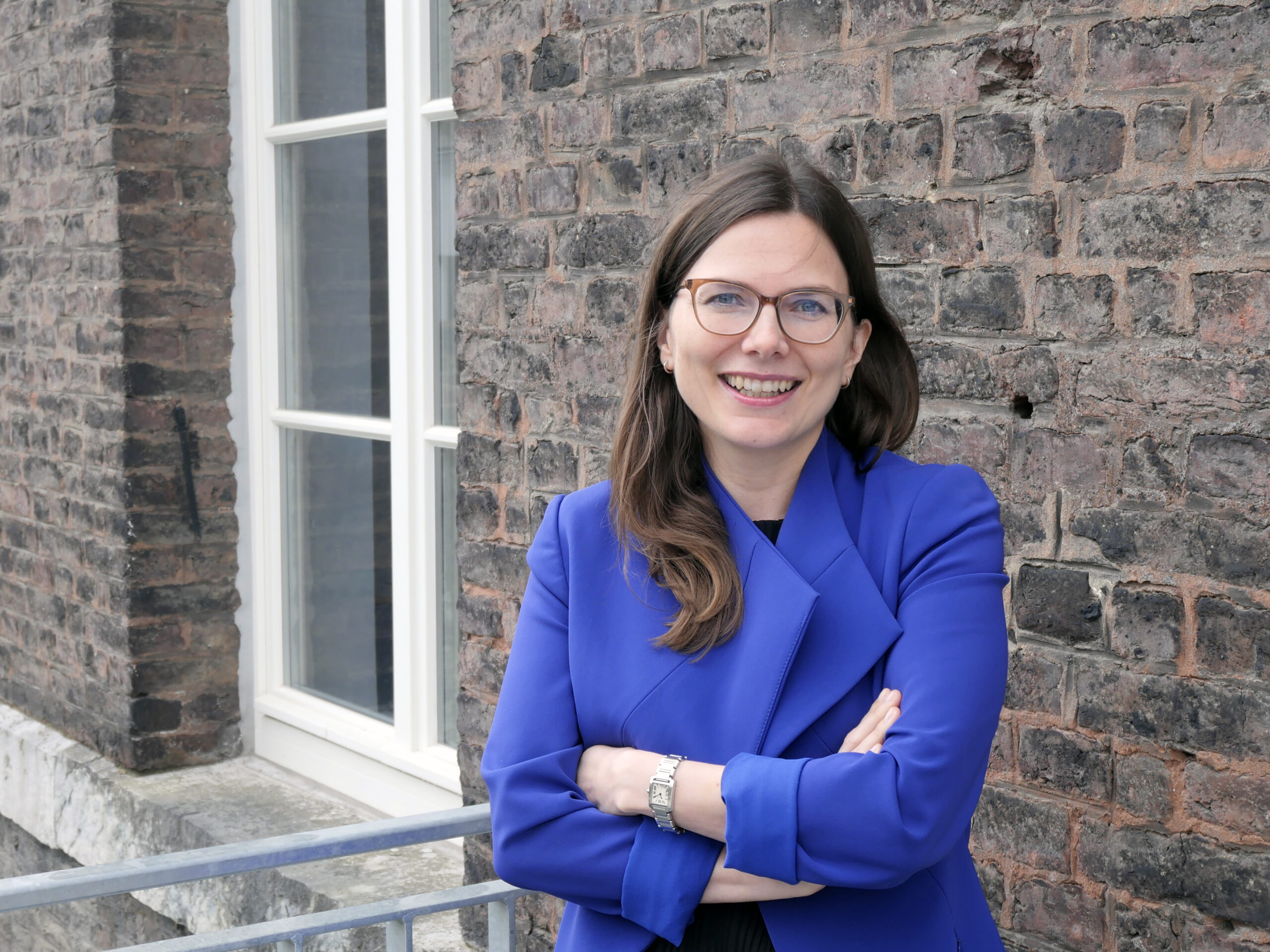
Elisabeth Röhrlich
Elisabeth Röhrlich is an Associate Professor at the Department of History, University of Vienna, Austria. Her work focuses on the history of international organizations and global governance during the Cold War and after, particularly on the history of nuclear nonproliferation and the International Atomic Energy Agency (IAEA).
From nukes to neural networks
As a historian of international relations and global governance, the dynamics of the current debate about AI regulation caught my attention. As a historian of the nuclear age, I was curious. Are we witnessing AI’s “Oppenheimer moment,” as some have suggested? Policymakers, experts, and journalists who compare the current state of AI with that of nuclear technology in the 1940s suggest that AI has a similar dual use potential for beneficial and harmful applications—and that we are at a similarly critical moment in history.
Some prominent voices have emphasized analogies between the threats posed by artificial intelligence and nuclear technologies. Hundreds of AI and policy experts signed a Statement on AI Risk that put the control of artificial intelligence on a level with the prevention of nuclear war. Sociologists, philosophers, political scientists, STS scholars, and other experts are grappling with the question of how to develop global instruments for the regulation of AI and have used nuclear and other analogies to inform the debate.

(Credits)
There are popular counterarguments to the analogy. When the foundations of today’s global nuclear order were laid in the mid-1950s, risky nuclear technologies were largely in states’ hands, while today’s development of AI is driven much more by industry. Others have argued that there is “no hard scientific evidence of an existential and catastrophic risk posed by AI” that is comparable to the threat of nuclear weapons. The atomic bombings of Hiroshima and Nagasaki in August 1945 had drastically demonstrated the horrors of nuclear war. There is no similar testimony for the potential existential threats of AI. However, the narrative that because of the shock of Hiroshima and Nagasaki world leaders were convinced that they needed to stop the proliferation of nuclear weapons is too simple.
Don’t expect too much from simple analogies
At a time of competing visions for the global regulation of artificial intelligence—the world’s first AI act, the EU Artificial Intelligence Act, just entered into force in August 2024—a broad and interdisciplinary dialog on the issue seems to be critical. In this interdisciplinary dialog, history can help us understand the complex dynamics of global governance and scrutinize simple analogies. Historical analysis can place the current quest for AI governance in the long history of international technology regulation that goes back to the 19th century. In 1865, the International Telegraph Union was founded in Paris: the new technology demanded cross-border agreements. Since then, any major technology innovation spurred calls for new international laws and organizations—from civil aviation to outer space, from stem cell technologies to the internet.
For the founders of the global nuclear order, the prospect of nuclear energy looked just as uncertain as the future of AI appears to policymakers today. Several protagonists of the early nuclear age believed that they could not prevent the global spread of nuclear weapons anyway. After the end of World War II, it took over a decade to build the first international nuclear authority.
In my recent book Inspectors for Peace: A History of the International Atomic Energy Agency, I followed the IAEA’s evolution from its creation to its more recent past. As the history of the IAEA’s creation shows, building technology regulation is never just about managing risks, it is also about claiming leadership in a certain field. In the early nuclear age—just as today with AI—national, regional, and international actors competed in laying out the rules for nuclear governance. US President Dwight D. Eisenhower presented his 1953 proposal to create the IAEA—the famous “Atoms for Peace” initiative—as an effort to share civilian nuclear technology and preventing the global spread of nuclear weapons. But at the same time, it was an attempt to legitimize the development of nuclear technologies despite its risks, to divert public attention from the military to the peaceful atom, and to shape the new emerging world order.
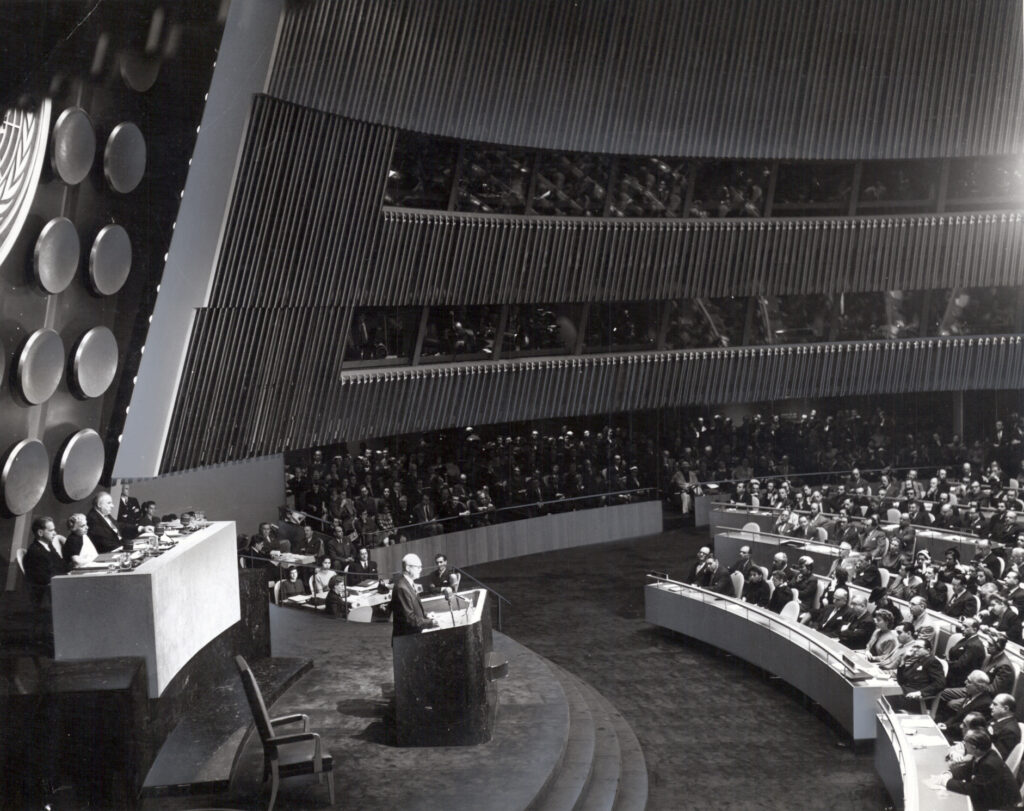
Simple historical analogies tend to underestimate the complexity of global governance. Take for instance the argument that there are hard lines between the peaceful and the dangerous uses of nuclear technology, while such clear lines are missing for AI. Historically, most nuclear proliferation crises centered around opposing views of where the line is. The thresholds between harmful and beneficial uses do not simply come with a certain technology, they are the result of complex political, legal, and technical negotiations and learnings. The development of the nuclear nonproliferation regime shows that not the most fool-proof instruments were implemented, but those that states (or other involved actors) were willing to agree on.
History offers lessons, but does not provide blueprints
Nuclear history offers more differentiated lessons about global governance than the focus on the pros and cons of the nuclear-AI analogy suggests. Historical analysis can help us understand the complex conditions of building global governance in times of uncertainty. It reminds us that the global order and its instruments are in continuous process and that technology governance competes with (or supports) other policy goals. If we compare nuclear energy and artificial intelligence to inform the debate about AI governance, we should avoid ahistorical juxtapositions.
Call for Applications 2025/26

Open call for applications for up to ten fellowships (postdoctoral to senior level) starting in October 2025 for up to twelve months, application deadline December 31, 2024.
Fellowships
The Käte Hamburger Kolleg Cultures of Research (c:o/re) is an international center for advanced studies at RWTH Aachen University, funded by the German Federal Ministry of Education and Research. The center has openings for a total of ten international fellows from the humanities and social sciences, as well as from natural, life, and technical sciences. Fellows will be offered a free space in which to develop their own research and to exchange ideas with each other. Cultures of Research is positioned where the fields of history, philosophy, and sociology interface with natural science and technology. The focus of the center’s work is on the manifold research cultures within the sciences, their commonalities and differences, and how they are transformed through interdisciplinary discourse. We are particularly interested in exploring the concepts of ‘digitality/complexity’, ‘globality/varieties of science’ and ‘expanded STS’ together with international fellows.
For the year 2025/2026 we are particularly, but not exclusively interested in the topic of ‘digitality/complexity’. Proposals may address
- the digital/non-digital divide in science and engineering,
- the varieties of digital cultures for knowledge production, and
- the influence of AI on science and technology.
Participation and contribution to the center
Fellows will join the international center for a maximum period of 12 months (minimum 6 months), starting in October 2025. The fellowships provide a full grant commensurate with applicants’ level of professional experience, working space in fully-equipped offices, logistical support, and access to the interdisciplinary research landscape and research labs at RWTH Aachen University. Fellows who take unpaid leave during their fellowship will receive financial compensation in the form of a stipend; alternatively, the center would pay for a teaching replacement at the fellow’s home institution.
In order to create a stimulating intellectual environment among the resident research community, regular presence at the center and participation in its weekly events are mandatory. Residency in Aachen is required and the center can support fellows in the search for accommodation.
For more information about fellowships at the KHK c:o/re, have a look at our FAQ section.
Location
RWTH Aachen University is one of the largest universities of science and technology in Europe. Located at the borders of Germany, Belgium, and the Netherlands (Euregio), it has close ties with STS institutes at the universities of Maastricht and Liège, and with the neighboring Jülich Research Center, a research campus of more than 5,000 researchers.
For more information on the RWTH Aachen University, visit their website.
Application Modalities
Applications are open to post-doctoral (PhD must be fully completed by the time of application) as well as senior researchers who have already distinguished themselves with outstanding work within the thematic focus of the center. The application (in English) includes the application form (link see below), a cover letter, curriculum vitae, list of publications, a writing sample (in English), and an exposé (max. 3 pages), in which the applicant presents her/his research project and its relation to c:o/re’s research program. An interdisciplinary outlook is advantageous.
Please submit your application via our online platform that you find here.
The deadline for applications is December 31, 2024.
Female researchers and scholars from the Global South are particularly encouraged to apply. For further information please visit the FAQs on our website.
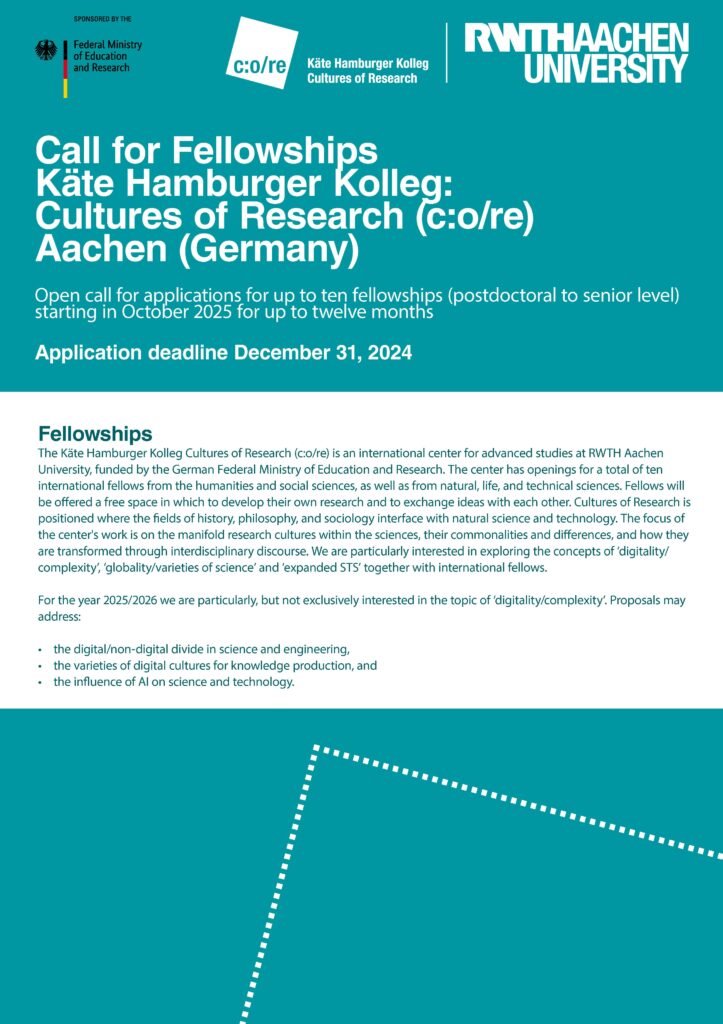
The Leibniz Puzzle
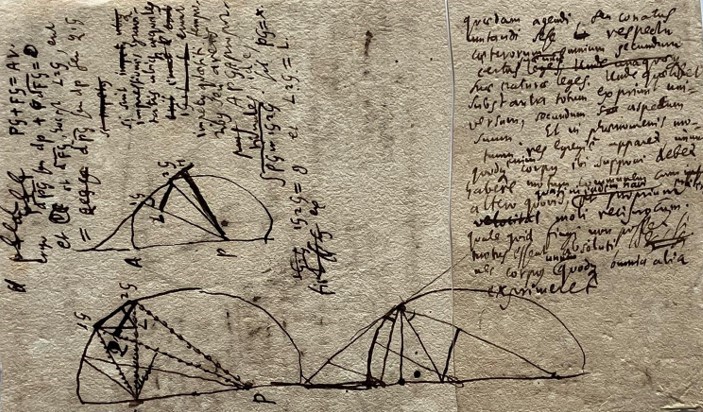
GABRIELE GRAMELSBERGER
On the occasion of an invitation to a lecture on Leibniz as a forerunner of today’s artificial intelligence at the Leibniz Library in Hannover, where most of his manuscripts are kept and edited, I had the opportunity to see some excerpts from his vast oeuvre. Prof. Michael Kempe, head of the research department of the Leibniz Edition, gave me some insights into the practice of editing Leibniz’s writings. Leibniz literally wrote on every piece of paper he could get his hands on. Hundreds of thousands of notes, because Leibniz wrote various notes on a large sheet of handmade paper and then cut it up himself to sort the individual notes thematically. A kind of early note box. However, he did not actually sort many of his notes and left behind a jumble of snippets.
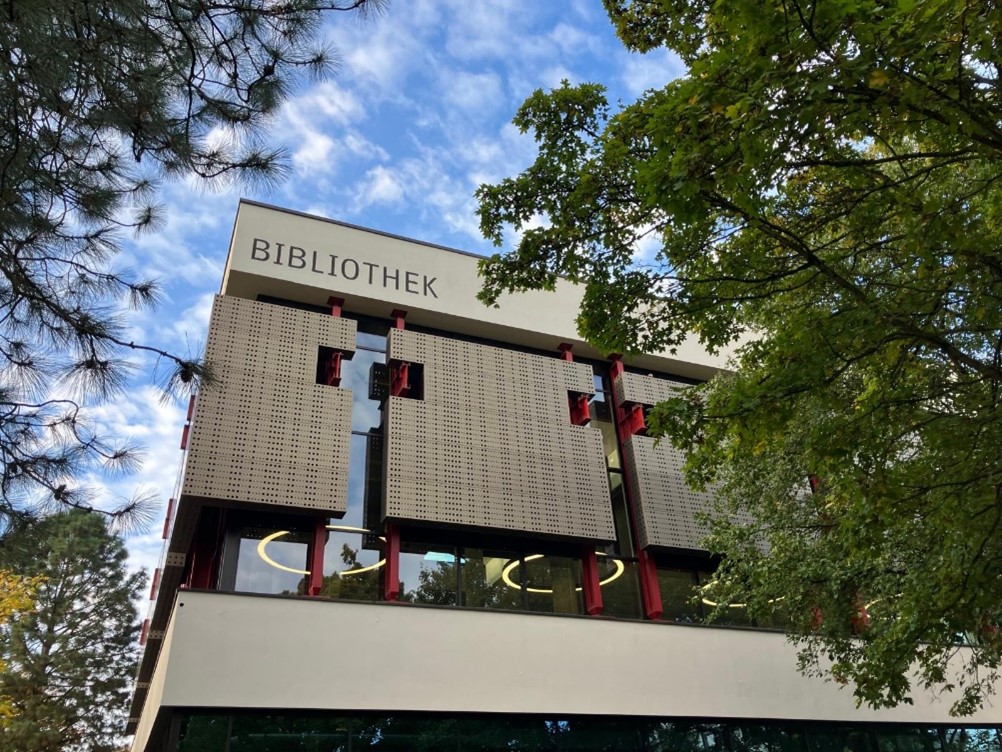
How do you deal with the jumble of 100,000 snippets?
Nowadays, Artificial Intelligence (AI) technology is used to put together the “puzzle”, as Michael Kemper calls it. Supported by MusterFabrik Berlin, which specializes in such material cultural heritage puzzles, the snippets are reassembled again and again and reveal many surprises. For example, a snippet of Leibniz’s idea on “Motum non esse absolutum quiddam, sed relativum …” (Fig. 2 front/back side) showed a fragment of a geometric drawing. However, the snippet 22 preserved in box LH35, 12, 2 was not completed by any other snippet in this box. The notes were sorted by hand in the late 19th century by the historian Paul Ritter (Ritter catalog) as a basis for a later edition. Ritter’s catalog was a first attempt to bring some order to the scattered notes. Now, more than a hundred years later, AI technology is bringing new connections and affiliations to light. Snippet 43, shown in Figure 3 (front/back side), completed this part of the puzzle. It was located in box LH35, 10, 7 and had never before been connected to snippet 22.
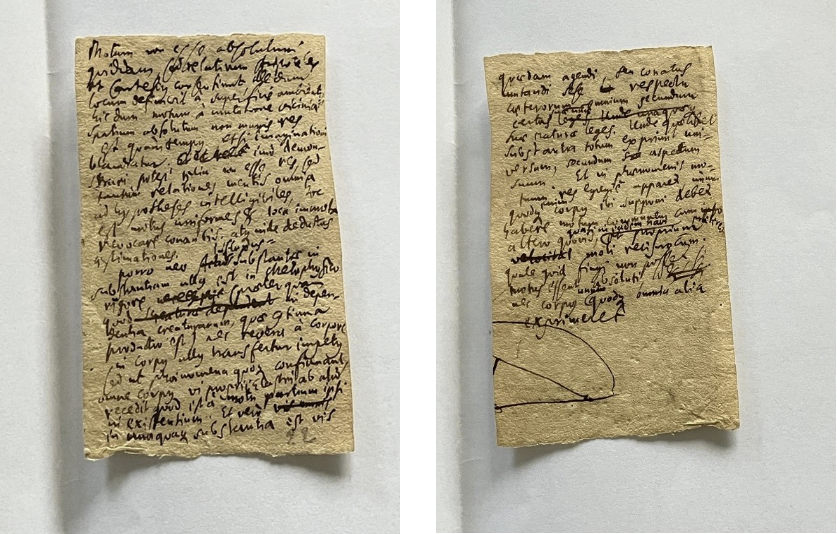
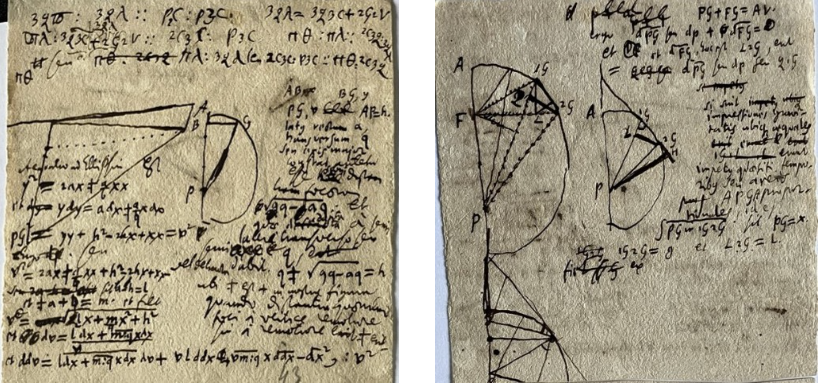
Trains of thought made visible
“What these recombined snippets tell us,” says Michael Kempe, “is how Leibniz’s thinking worked. He used writing to organize and clarify his thoughts. He wrote all the time, from morning, just after waking up, until late at night. And he often used drawings to illustrate, but also to test his ideas. He changed the sketches and thus further developed his train of thought.” Combined snippets 22/43 are such an example. While writing about the relativity of motion, Leibniz made some geometric sketches of the motion of the planets and added some calculations (fig. 4b).
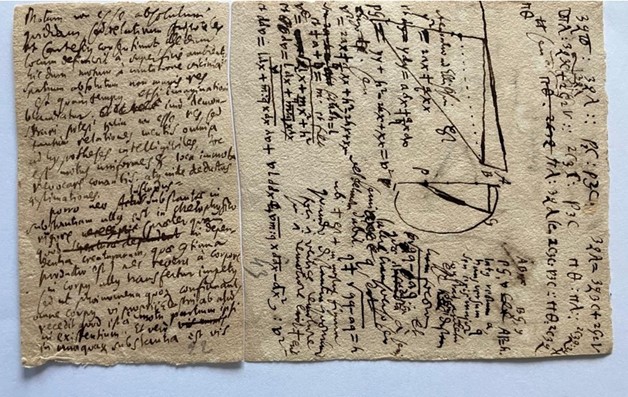

Leibniz’ contributions to AI
An interesting side aspect is that the AI technology, used for solving the Leibniz puzzle, is based on a modern version of Leonhard Euler’s polyhedron equation, which was inspired by Leibniz’s De Analysi situs. De Analysi situs, in turn, was the topic of my talk the day before on the influence of Leibniz’s ideas on AI technology. So, it all fitted together very well. However, Leibniz’ contributions to AI were manifold. Already his contribution to computation were outstanding—he had developed a dyadic calculation system, an arithmetic mechanism (Leibniz wheel), which was in use until the beginning of the 20th century, and directed the construction of a four species arithmetic machine. However, his contribution to a calculus of logic was even more significant, because he had to overcome sensory intuition and to develop an abstract intuition solely based on symbolic data. De Analysi situs was precisely about this abstract stance, which came into use only in 19th century’s symbolic logic. Furthermore, De Analysi situs is considered a precursor of topology, which inspired Euler’s polyhedron equation, which expresses topological forms with graphs. Graphs, in turn, play a crucial role in AI for network analysis of all types of data points and relationships. This closes the circle from Leibniz to AI.
De Analysi situs (1693)
How did Leibniz overcome sensory intuition and develop an abstract intuition solely based on data points and relationships? The text begins with the following sentences: “The commonly known mathematical analysis is one of quantities, not of position, and is thus directly and immediately related to arithmetic, but can only be applied to geometry in a roundabout way. Hence it is that from the consideration of position much results with ease which can be shown by algebraic calculation only in a laborious manner” (Leibniz, 1693, p. 69). Leibniz criticized the limited arithmetic operativity of algebraic analysis (addition, subtraction, multiplication, division, square root) and called for the expansion of operations through the analytical method for geometry and geometrical positions.
This expansion was the following: “The figure generally contains, in addition to quantity, a certain quality or form, and just as that which has the same quantity is equal, so that which has the same form is similar. The theory of similarity or of forms extends further than mathematics and is derived from metaphysics, although it is also used in mathematics in many ways and is even useful in algebraic calculus. Above all, however, similarity comes into consideration in the relations of position or the figures of geometry. A truly geometrical analysis must therefore apply not only equality and proportion […] but also similarity and congruence, which arise from the combination of equality and similarity” (p. 71).
Leibniz criticized that it was the fault of the philosophers, who were content with vague definitions. And now comes the decisive step: he proposed an exact definition for the concept of similarity. He writes: “I have now, by an explanation of the quality or form which I have established, arrived at the determination that similar is that which cannot be distinguished from one another when observed by itself” (pp. 71-72). Thus, he replaced similarity by indistinguishability and argued that indistinguishability only requires the comparison of data “salva veritate.” He thus established a concept of indistinguishability which can “be derived from the symbols by means of a secure computations and proof procedure” (p. 76), which is the basis of all data operations to this day.
With this algorithm, Leibniz hoped, that “all the questions for which the faculty of perception is no longer sufficient can be pursued further, so that the calculus of position described here represents the complement of sensory perception and, as it were, its completion. Furthermore, in addition to geometry, it will also permit hitherto unknown applications in the invention of machines and in the description of the mechanisms of nature” (p. 76). It is an algorithm that is intended to help recognize similarities purely on the basis of data. Today, we call this clustering and it is the central strategy of unsupervised learning, i.e. a method for discovering similarity structures in large data sets.
References and further readings
De Risi, Vincenzo: The Analysis Situs 1712-1716, Geometry and Philosophy of Space in the Late Leibniz, Basel: Birkhäuser 2006.
Gramelsberger, Gabriele: Operative Epistemologie. (Re-)Organisation von Anschauung und Erfahrung durch die Formkraft der Mathematik, Hamburg: Meiner 2020. Open access URL: https://meiner.de/operative-epistemologie-15229.html
Gramelsberger, Gabriele: Philosophie des Digitalen zur Einführung, Hamburg: Junius 2023.
Kempe, Michael: Die beste aller möglichen Welten: Gottfried Wilhelm Leibniz in seiner Zeit, S. Fischer: München 2022.
Leibniz, Gottfried W.: De analysi situs (1693), in: Philosophische Werke (ed. by Artur Buchenau and Ernst Cassirer), vol. 1, Meiner: Hamburg 1996, pp. 69–76. (All quotes translated by DeepL).
Ziegler, Günter M., Blatter, Christian: Euler’s polyhedron formula — a starting point of today’s polytope theory, Write-up of a lecture given by GMZ at the International Euler Symposium in Basel, May 31/June 1, 2007. URL: https://www.mi.fu-berlin.de/math/groups/discgeom/ziegler/Preprintfiles/108PREPRINT.pdf
Towards Expanding STS?
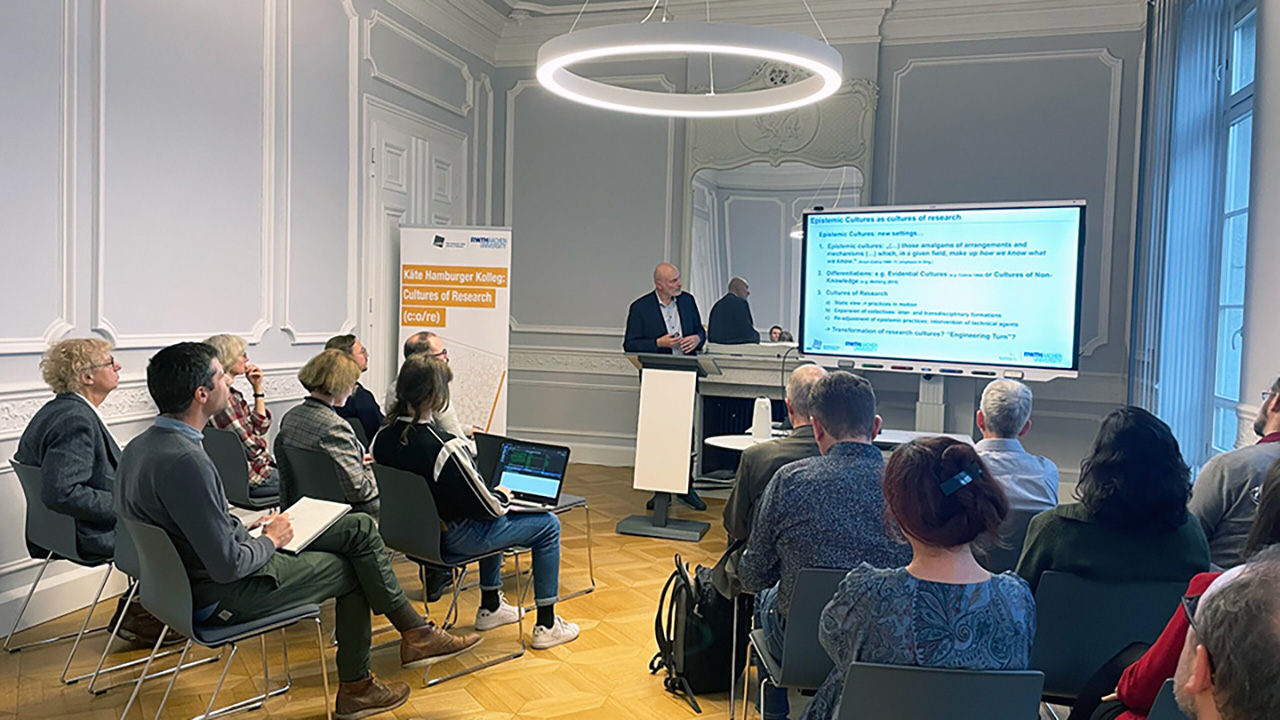
MARCUS CARRIER
On October 9, 2024, KHK c:o/re director Prof. Dr. Stefan Böschen opened the new lecture series “Expanding Science and Technology Studies”. His talk titled “Towards Expanding STS?” was aimed at setting the scene for the lecture series and served as a starting point for further reflections on the topic. The talk was mostly designed around sketching out the problems that, as Prof. Böschen argues, classical Science and Technology Studies (STS) are not equipped to tackle alone. Instead, he argues for an expansion of STS towards other disciplines that investigate Science and Technology, namely History of Science and Philosophy of Science, to better grasp these problems.
Prof. Böschen started his talk with presenting his own personal starting points for thinking about this topic. First, there is the new concept of “Synthetica” or new forms of life that are designed by humans which also played a role in the opening talk by KHK c:o/re director Prof. Gramelsberger for the 2023/2024 lecture series “Lifelikeness”. Prof. Böschen now asked whether these Synthetica are epistemic objects or technical objects and if STS are equipped to describe the practice around them. Second, he talked about sustainable development goals. These are very knowledge intensive, but at the same time the knowledge management has to be done by different countries which also have to take into account different forms of knowledge and have to manage a lot of diversity in the system. Third, Prof. Böschen reflected on different formats he experienced that made him think further on expanding STS: The Temporary University Hambach that was designed around the structural change in the Rhinish Revier and based on the needs of local people, and the STS Hub 2023 in Aachen which was designed to bring together different disciplines doing “science on science.”

After having set the scene with these personal starting points, Prof. Böschen claimed that there are signs for science changing significantly. First, he concentrated on the cluster of topics around digitization and especially the digitization of problem-solving in science. This cluster includes topics like digital models both for scenario building and for reducing the space of options where real-world problems must be transformed to be computable by which models shape the way of thinking in science. But also, the digitization of scientific literature to grasp the ever-growing amount as well as the digitization of experiments which can pose challenges for expectations of reproducibility are part of this cluster.
In the tension of simplification for the sake of problem-solving and complexifying to better understand specific contexts, Prof. Böschen argued that digital tools are steered towards simplification. This, in turn, creates new and specific concerns about the epistemic quality of knowledge produced by these tools and about the way they transform research in practice.
The second cluster of topics that Prof. Böschen argued are a sign of significant change in science is the de-centralization of knowledge production exemplified in projects like living labs which were also part of recent talk by Dr. Darren Sharp at the KHK c:o/re. Programs like living labs, where science encourages society to participate in the making of solutions for local issues, can have two forms. On the one hand side, they can in collaborative ways explore the status quo and define what should be understood as the “problem” before bringing together local experiences and knowledge as well as scientific knowledge to solve it. On the other hand, living labs can start out with a technological innovation and can then locally look for applications and use-cases for this innovation. The technology can then be optimized towards local needs.
In both forms of living labs, the important new criterion for knowledge is relevance which entails the question for whom it should be relevant and who defines that. Also, these local solutions and optimizations face problems of scaling. How can they be scaled up and are the “problems” on all scaling level still the same? Lastly, how does it impact knowledge production on a deeper level?

Both, the digitization of science and the de-centralization of knowledge production show that science is in the midst of a transformation according to Prof. Böschen. There is a need for a relational analysis of epistemic quality and epistemic authority. He shares his intuition to preserve the ideal of reliable scientific knowledge and that knowledge production for decision making processes has an epistemic as well as an institutional side. This, Prof. Böschen argues, can not be done by any discipline alone but needs collaboration between the sociologically and ethnographically centered STS and more philosophically and historically oriented research on science. Expanded STS as Prof. Böschen envisions it should tailor new concepts for analyzing research during transformation.
With this call to action, Prof. Böschen leaves not with a set program but with a description of problems that call for future interdisciplinary discussions.
On October 30, 2024, the next talk of the Lecture Series titled “An IAEA for AI? The Regulation of Artificial Intelligence and Governance Models from the Nuclear Age” will be by our fellow Elisabeth Röhrlich. We look forward to continuing the conversation!
Workshop “Epistemology of Arithmetic: New Philosophy for New Times”
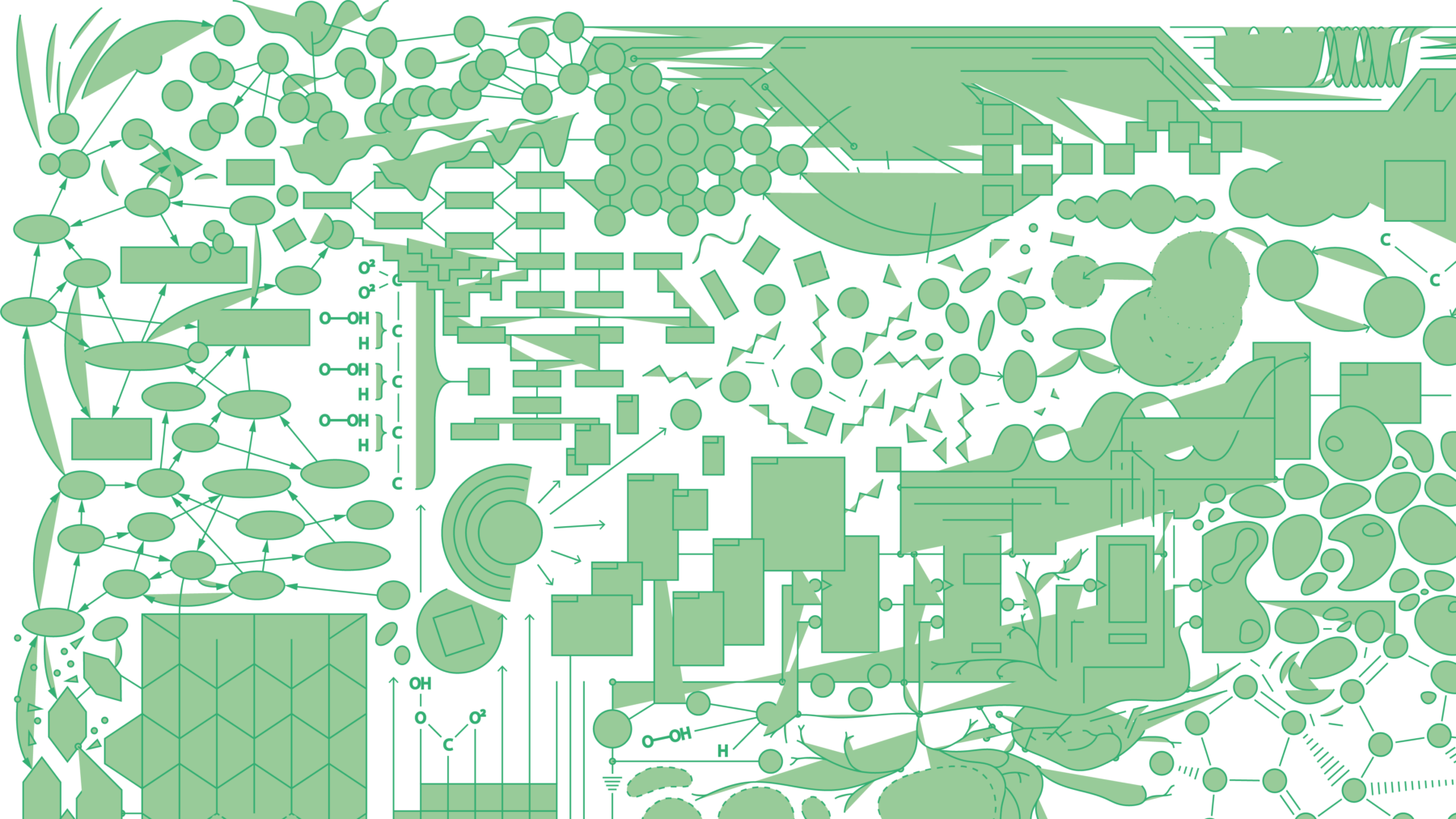
The Käte Hamburger Kolleg on Cultures of Research hosted a philosophical Workshop on May 16th and 17th May. It was organized by Markus Pantsar and Gabriele Gramelsberger for good reasons: Gabriele Gramelsberger received as the first German philosopher the K. Jon Barwise Prize, while Markus Pantsar’s book “From Numerical Cognition to the Epistemology of Arithmetic” had been recently published by Cambridge University Press as the first book publication by a fellow at the KHK Aachen.
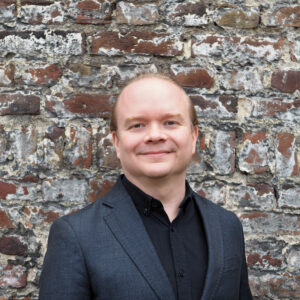
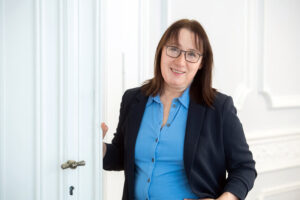
Markus Pantsar: “From Numerical Cognition to the Epistemology of Arithmetic”
The workshop kicked off with a presentation by Markus Pantsar (RWTH Aachen University) on how his book came to be. The leading question is: how can we use empirical knowledge about numerical cognition to gain a better understanding of arithmetical knowledge? His goal is to combine philosophy of mathematics with the cognitive sciences to gain a deeper understanding of how we develop and acquire number concepts and their arithmetic. It’s fascinating how these concepts develop differently across cultures, even though they are based on universal proto-arithmetical numerical abilities. Indeed, even animals have proto-arithmetical abilities, evidenced by their ability to differentiate on collections based on numerosities. This leads to an intriguing question: how do we come to develop and acquire number concepts? From an anthropological perspective, numbers are a fundamental aspect of human life in many cultures, yet there are also cultures without numbers. Hence, aside from the evolutionarily developed proto-arithmetical abilities, we also need to focus on the cultural foundations of arithmetic. All this, Pantsar argued, is relevant for the epistemology of arithmetic.
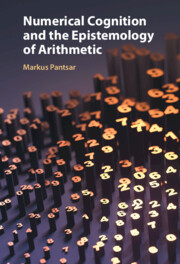
Dirk Schlimm: “Where do mathematical symbols come from?”
Dirk Schlimm from McGill University in Montreal was the next to present. He talked about his recent research project on mathematical notations. Grounding on the question of what notations are (according to Peirce), Schlimm introduced his newest findings that mathematical notations are sometimes arbitrary, but this is not the case generally. Mathematical symbols may resemble or draw from shapes in the real world, or have other characteristics that connect to our cognitive capacities. The issue is, however, very complex. Mathematical symbols, in particular, carry many purposes and their use needs to be studied with this in mind. In addition to purely scientific purposes, we should consider how academic practices and political dimensions influence the acceptance and use of notations.
Richard Menary: “The multiple routes of enculturation”
Richard Menary (Macquarie University, Sydney) then gave us insights into his research on enculturation, arguing that there are multiple cultural pathways to developing and acquiring number concepts and arithmetic. Menary calls this the multiple routes model of enculturation. He discussed aspects of Pantsar’s book, especially the developmental path from proto-arithmetical cognition to arithmetical cognition. Menary showed a variety of factors in how this transition can take place, like finger counting, writing and forming numbers on paper. Enculturation through cultural practices has a significant influence on the development of arithmetical abilities, but we should not be fooled into thinking that such enculturation is a uniform phenomenon that always follows similar paths.
Regina Fabry: “Enculturation gone bad: The Case of math anxiety”
Regina Fabry (Macquarie University) showed in her presentation on math anxiety how the relationship between cognition and affectivity needs to be included in accounts of arithmetical knowledge. While accounts of enculturation, like those of Menary and Pantsar, focus on the successful side of things, it is important to acknowledge that processes of enculturation can also go bad. Socio-cultural factors associated with mathematics education can lead to anxiety, which hinders the learning process with long-standing consequences. Empirical studies can contribute to a better understanding of where epistemic injustice may be present, and where there is a strong link to math anxiety. Accounts of arithmetical knowledge drawing from enculturation should be sensitive to such problems, but we can also use research on math anxiety to understand better the role of affectivity in enculturation in general.
Catarina Dutilh Novaes: “Dialogical pragmatism and the justification of deduction”
On Friday, Catarina Dutilh Novaes from Vrije University of Amsterdam discussed her ongoing investigation on the dialogical roots of deduction and posed the question what, if anything, can justify deductive reasoning. While her book The Dialogical Roots of Deduction offers an analysis of deduction as it is present in cultural practices, the question of its justification is left open. In her talk, she discussed whether pragmatist approaches could fill the gap to ground deduction. She argued that the justification for deduction comes from nothing beyond the pragmatics of the dialogical development of deduction. She supported this claim by a discussion on pragmatist theories of truth and recent discussion on anti-exceptionalism in logic.

Frederik Stjernfelt: “Peirce’s Philosophy of Notations and the Trade-offs in Comparing Numeral Symbol Systems”
The former KHK Fellow Frederik Stjernfelt (Aalborg University Copenhagen) talked about his recent studies on Charles S. Peirce’s work on notations, co-conducted with Pantsar. Although better known for his work on logical notation, Peirce was deeply interested also in mathematical notation, including numeral symbol systems. He was eager to find a fitting notation for numbers which is easy to learn and allows easy calculations. Peirce focused in particular on the binary and heximal systems, the latter of which he considered superior to our decimal system. Stjernfelt presented Peirce-inspired criteria for different aims of numeral symbol systems, like iconicity, simplicity, and ease of calculation, arguing that the choice of a symbol system comes with trade-offs between them.
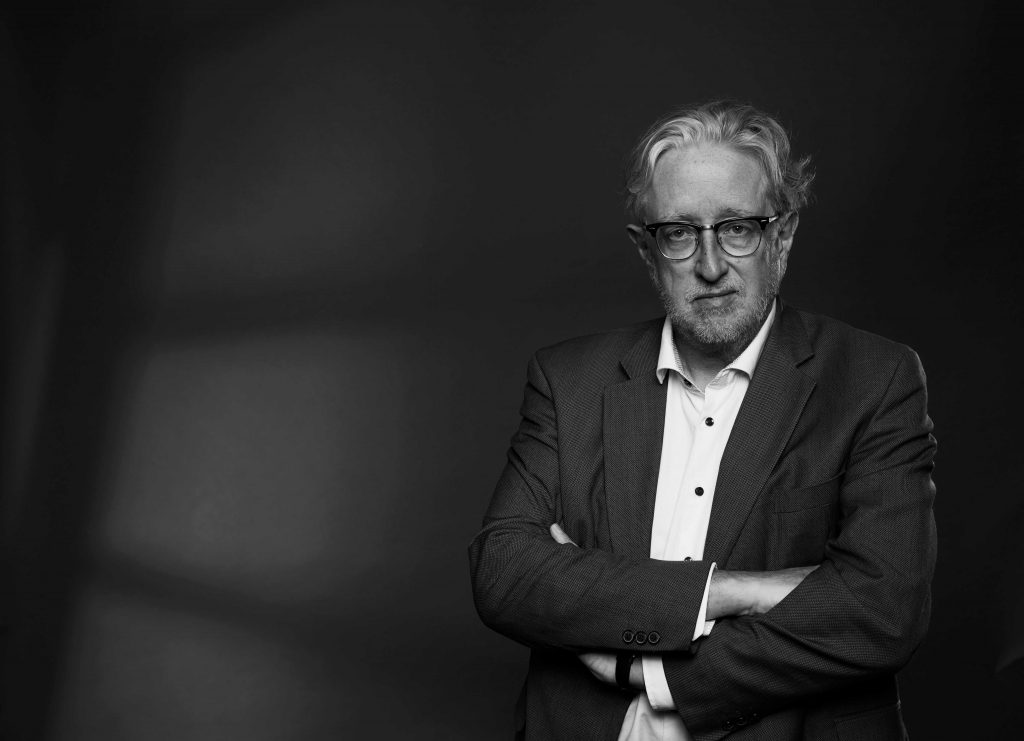
Stefan Buijsman: “Getting to numerical content from proto-arithmetic”
Stefan Buijsman (TU Delft) discussed Pantsar’s account of how humans arrive from proto-arithmetical abilities to proper arithmetical abilities. Studies of young children suggest that the core cognitive object-tracking system (OTS) and approximate number system (ANS) can both play a role in this process, but a key stage is acquiring the successor principle (that for every number n, also n + 1 is a number). Buijsman emphasized the role of acquiring the number concept one and its importance in grasping the successor principle, noting that Pantsar’s account could benefit from more focus on the special character of acquiring the first number concept.
Alexandre Hocquet: “Reproducibility, Photoshop, Pubpeer, and Collective Disciplining”
With Alexandre Hocquet’s (Université de Lorraine/ Laboratory Archives Henri-Poincaré) talk, the workshop moved from the philosophy of arithmetic to digital and computational approaches to philosophy of science. Hocquet discussed Photoshopping scientific digital images and using them for fraud in academic research, focusing on the Voinnet affair. On this basis, he discussed the topics of trust, reproducibility and change of scientific methods. With the use of digital images as evidence, new considerations of transparency are needed to ensure trust in scientific practice.

Gabriele Gramelsberger and Andreas Kaminski: “From Calculation to Computation. Philosophy of Computational Sciences in the Making”
In the final talk of the workshop, Gabriele Gramelsberger (RWTH Aachen University) and Andreas Kaminski (TU Darmstadt) focused on the computational turn in science. While mathematics has been an indispensable part of science for centuries, the increasing use of computer simulations has replaced arithmetical calculations by Boolean computations. Gramelsberger discussed the cognitive limitations of interpreting non-linear computing systems. Kaminski then considered questions of epistemic, pragmatic, and ethical opacity that arise from these limitations.
New Fellow Cohort for the Käte Hamburger Kolleg: Cultures of Research (c:o/re)

The Käte Hamburger Kolleg: Cultures of Research (c:o/re) welcomes twelve new international fellows for the academic year 2024/25, this year mainly from the humanities and social sciences.
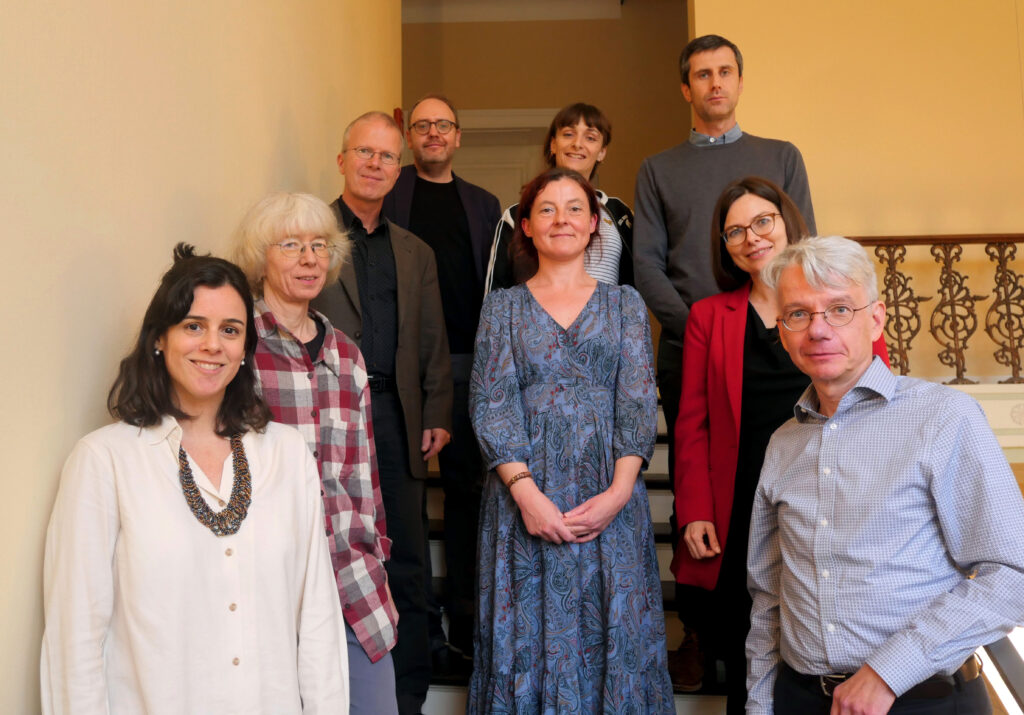
Between July and October, Dr Denisa Butnaru (Sociology), Dr Sam Ducourant (History of Science), Dr Grit Laudel (Sociology), Dr Nathalia Lavigne (Artistic Research and Urbanism), Professor Carsten Reinhardt (History of Science), Professor Elisabeth Röhrlich (History), and Professor Ingo Schulz-Schaeffer (Science and Technology Studies) began their fellowship.
They will be joined by Dr Daniela Wentz (Media Studies), Dr Ehsan Nabavi (Science and Technology Studies) and Professor Harro van Lente (Science and Technology Studies) at the end of the year, and in January 2025 by Dr Matthew Eisler (Science and Technology Studies) and Dr Hannah Star Rogers (Science and Technology Studies).
RWTH-sponsored short-term fellows this year will be Dr Ricky Wichum (Sociology) from October to December, Professor Jack Copeland (Philosophy) from October to November, Professor Carl Mitcham (Philosophy) in October, and Professor Gabriel Sandu (Philosophy) in November.
The Käte Hamburger Kolleg: Cultures of Research (c:o/re) is the first International Center for Advanced Studies at RWTH Aachen University and is funded by the German Ministry of Education and Research for a period up to twelve years. The fellowships, which cover a research stay of six to twelve months, offer scholars the opportunity to immerse themselves deeply in a research project of their own choice while also being able to discuss core issues of the Center (e.g. digitalization of science and global varieties of scientific cultures) in an interdisciplinary environment.
The substantive focus of the Center’s work for the 2024/25 academic year is on the topic of “Expanded Science and Technology Studies (STS)”. In various event formats, such as a lecture series in the winter semester, the fellows and invited guests will shed light on the current challenges for Science Studies and discuss future developments from different disciplinary perspectives.
Event Announcement: Freedom of Research – A European Summit: Science in Times of Uncertainty
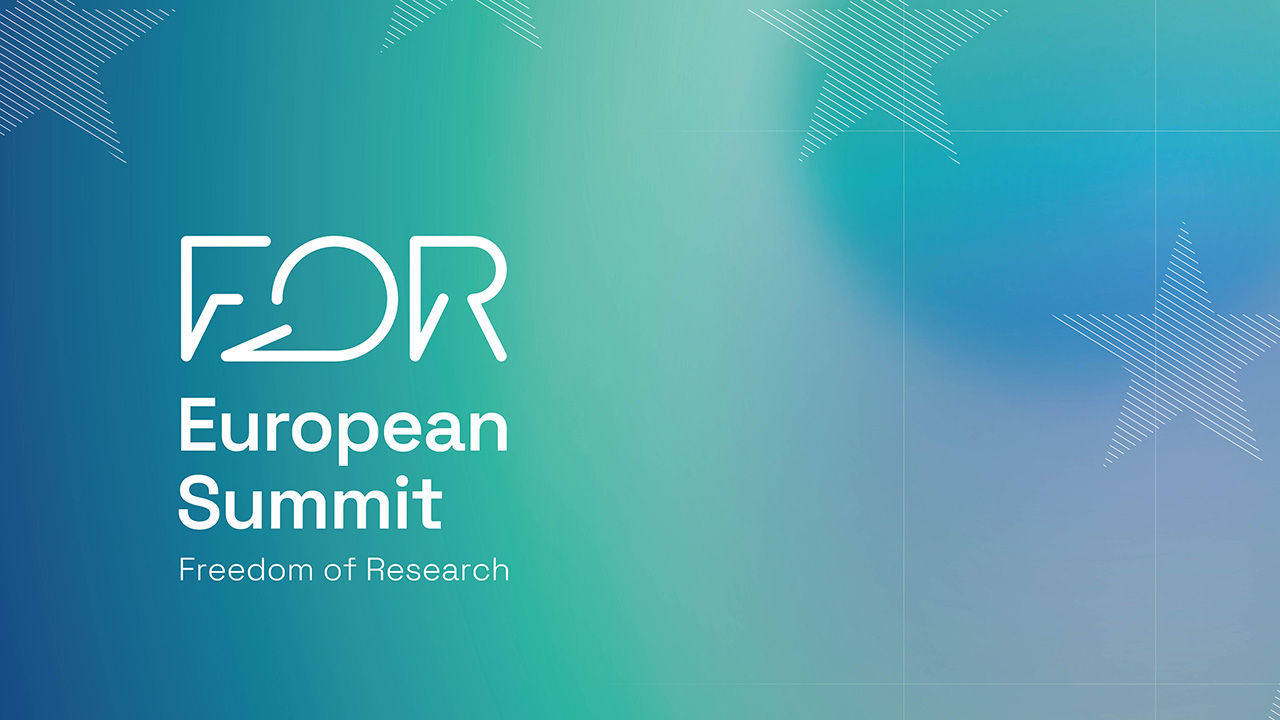
Together with the Charlemagne Prize Foundation and RWTH Aachen University’s Knowledge Hub, the Käte Hamburger Kolleg: Cultures of Research (co/re) organizes an international symposium entitled “Freedom of Research: A European Summit – Science in Times of Uncertainty”, which will take place on November 4 and 5, 2024 in Aachen.
Freedom in all its dimensions is a core European value and right. Freedom of research is vital for fostering innovation, expanding knowledge, and ensuring Europe’s global competitiveness. Today, this freedom is increasingly under pressure from political tensions and shifting uncertainties. How can we navigate these challenges? How do we create a resilient framework for future developments to come?
We invite you to Aachen for a summit focused on the crucial role of freedom in scientific, cultural, social, and political contexts. With a program that includes a late-night event, an all-day symposium, an art exhibition, and a festive evening, the summit will bring together researchers, policymakers, representatives of business, media, culture and the public to exchange ideas and develop strategies for strengthening academic freedom, fostering a resilient European community that champions democratic governance and societal benefit, and connect fresh perspectives and innovative solutions for the challenges of tomorrow.
All information about the program, the speakers and the registration form can be found on the event website: www.for-summit.eu.

Get to know our Fellows: Denisa Butnaru
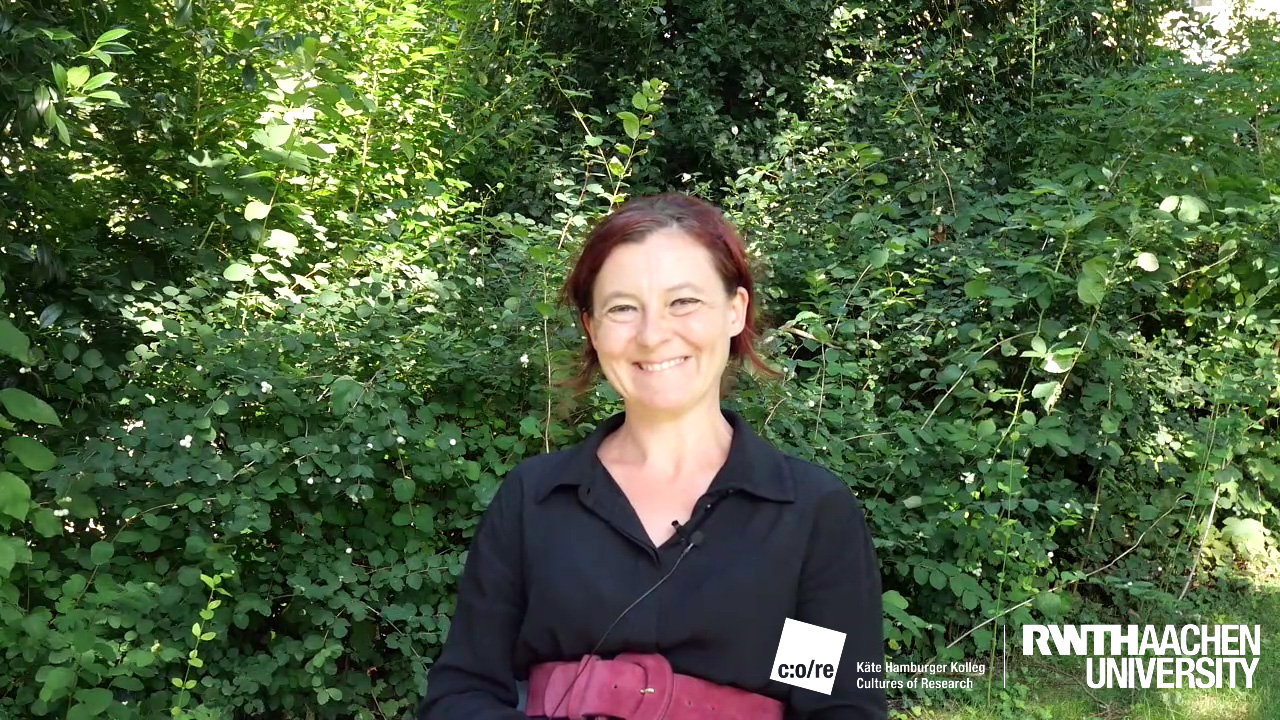
Get to know our current fellows and gain an impression of their research. In a new season of short videos, we asked them to introduce themselves, talk about their work at the KHK c:o/re and the research questions that fascinate them.
In this video, Denisa Butnaru, lecturer in sociology at the University of Konstanz, introduces her research on bio-objects, how human bodies transform following the development of current technologies and how the production of bio-objects is linked to developments in healthcare and the armed forces.
Check out our media section or our YouTube channel to have a look at the other videos.
From bio-ontologies to academic lives: What studying biocuration can tell us about the conditions of academic work
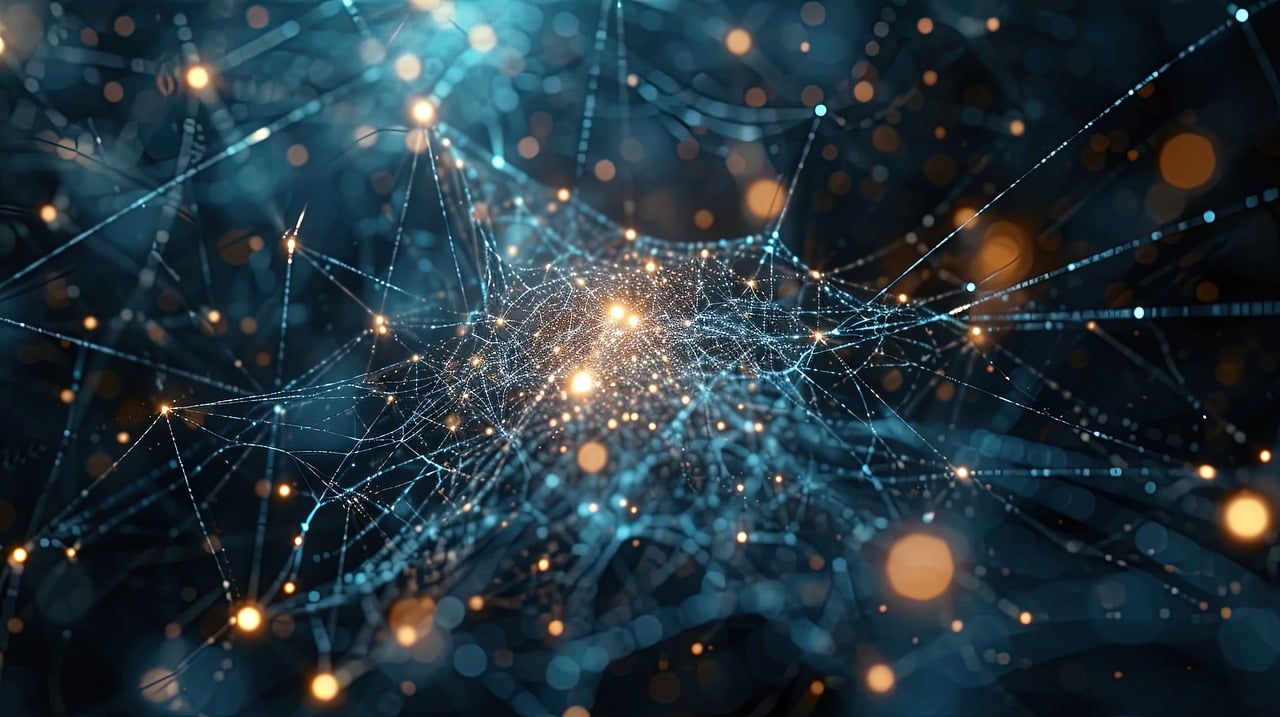
SARAH R. DAVIES
When I arrived at the Käte Hamburger Kolleg in February 2024, my plan was to study bio-ontologies: the systems that are used to categorise and organise biological data. As a Science and Technology Studies (STS) researcher, I had been interested in biocuration for a while, and one key aspect of biocuration work is developing and applying ontologies. Exploring bio-ontologies would, I thought, give me important insights into the practice of biocuration and what it is doing to our understandings of biology, the organisms, and entities that are studied, and ideas about ‘life’ itself.

Sarah R. Davies
Sarah R. Davies is Professor of Technosciences, Materiality, and Digital Cultures at the Department of Science and Technology Studies, University of Vienna, Austria.
Her work explores the intersections between science, technology, and society, with a particular focus on digital tools and spaces.
I am a social scientist, so delving into the nature of bio-ontologies by looking at natural science and philosophy literature about them was something of a departure for me. What I hadn’t necessarily expected was that doing so would bring me back to more sociological questions, in particular regarding the conditions of academic work. In other words, studying bio-ontologies led me to argue that these systems, which are “axioms that form a model of a portion of (a conceptualization) of reality”[1]Bodenreider, Olivier, and Robert Stevens. 2006. “Bio-ontologies: current trends and future directions.” Briefings in Bioinformatics 7 (3): 256–74. https://doi.org/10.1093/bib/bbl027., are connected not just to forms of life in the context of biological entities, but with regard to the researchers who create and use them.
Let me rewind a bit. What is biocuration, and what exactly are bio-ontologies? Biocuration is “the process of identifying, organising, correcting, annotating, standardising, and enriching biological data”. [2]Tang, Y. Amy, Klemens Pichler, Anja Füllgrabe, Jane Lomax, James Malone, Monica C. Munoz-Torres, Drashtti V. Vasant, Eleanor Williams, and Melissa Haendel. 2019. “Ten quick tips for … Continue reading Its “primary role … is to extract knowledge from biological data and convert it into a structured, computable form via manual, semi-automated and automated methods.”[3]Quaglia, Federica, Rama Balakrishnan, Susan M Bello, and Nicole Vasilevsky. 2022. “Conference report: Biocuration 2021 Virtual Conference.” Database 2022 (Januar): baac027. … Continue reading This is largely done in the context of large data- and knowledgebases (such as FlyBase or UniProt), which are now central to the biosciences. Biocurators work to develop and maintain such databases, for example by reading scientific articles and extracting useful information from them, inputting data into databases, adding metadata and annotating information, and – importantly – creating and using the bio-ontologies I have already mentioned.
Bio-ontologies, then, are a means of classifying and organising biological data. They offer a ‘controlled vocabulary’ (meaning a standardised terminology), but also represent current knowledge about biological entities in that they consist of “a network of related terms, where each term denotes a specific biological phenomenon and is used as a category to classify data relevant to the study of that phenomenon.”[4]Leonelli, Sabina. 2012. “Classificatory Theory in Data-intensive Science: The Case of Open Biomedical Ontologies.” International Studies in the Philosophy of Science 26 (1): 47–65. … Continue reading Bio-ontologies such as the Gene Ontology therefore offer not only a means of accessing knowledge and data, but investigating biological phenomena by creating, as noted on the Gene Ontology’s website, “a foundation for computational analysis of large-scale molecular biology and genetics experiments in biomedical research”.
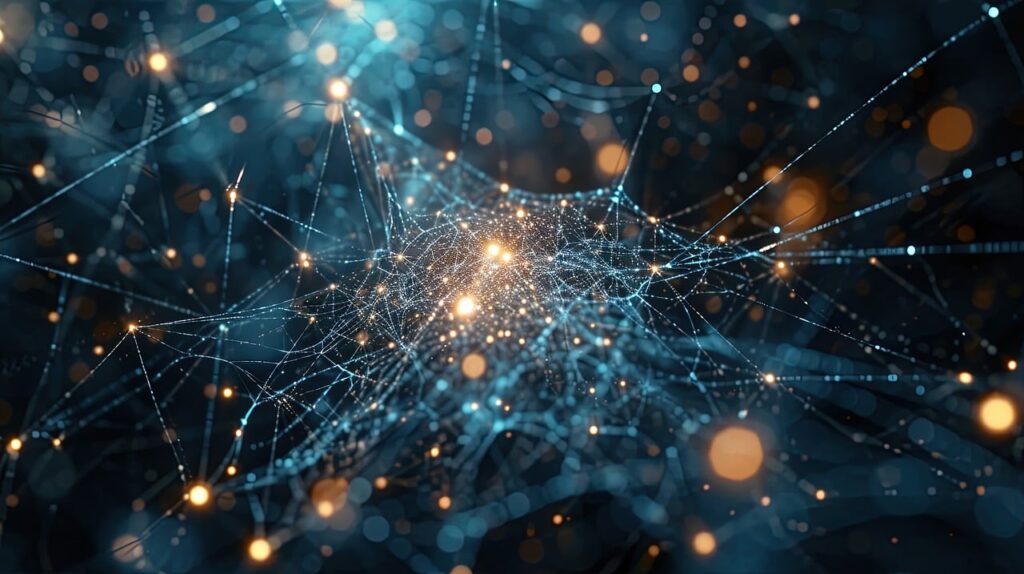
As I looked into the nature of bio-ontologies, it became clear to me that these organisational systems for biodata are hugely important. They allow researchers in the biosciences to access current knowledge and relevant data (not always easy in the midst of a ‘data deluge’), but they also have epistemic significance. As Sabina Leonelli writes, bio-ontologies “constitute a form of scientific theorizing that has the potential to affect the direction and practice of experimental biology.”[5]Ibid. The development and application of ontologies to biological data thus renders the contemporary biosciences thinkable, capturing the current state of the art and allowing researchers to extrapolate from that.
Given this significance, it is perhaps somewhat surprising that biocuration, as an area of science, often goes unnoticed by its users and by research funders. As one biocurator told me:
…we are in the background. Even researchers who heavily use these resources [databases], don’t usually know our names and don’t think about us existing. But they love the resource. And that’s actually something we’ve gotten with the booth when we were at conferences. People will come up and be like, oh you are the [resource]! Wow, you are good, awesome. They are kind of shocked that there’s humans there.[6]Davies, Sarah R., and Constantin Holmer. 2024. “Care, collaboration, and service in academic data work: biocuration as ‘academia otherwise.'” Information, Communication & … Continue reading
Biocurators are not only ‘in the background’, they frequently struggle to get sustained funding for their work, and generally need to build careers through a series of temporary contracts. Perhaps because databases are machine-readable and can be queried automatically, both funders and the researchers who use curated resources often seem to imagine that the work of biocuration can be readily carried out through automated means; in practice, while biocurators make use of automated tools such as text-mining, interpreting scientific literature and annotating data is a highly skilled activity that cannot be easily replicated by AI or other technologies.
Why is biocuration so under-valued despite its epistemic importance? One answer is that biocuration does not fit well with current systems of reward and evaluation within academia. Researchers are, for instance, rewarded for publishing frequently and in high-profile journals, but biocurators produce other kinds of outputs to journal articles – the data – and knowledgebases that they work on. Similarly, gaining research funding is typically seen as a sign of a successful academic, but biocurators’ work does not fit well into the categories that funders use to assess research quality (such as novelty). As Ankeny and Leonelli explain:
Value in science (be it of individual researchers or particular research projects) is largely calculated on the basis of the number of publications produced, the quality of the journals in which those publications appeared, and the impact of the publications as measured by citation indices and other measures: given that [data] donation and curation are still largely unrecognized, the value of these activities correspondingly is limited in part because it cannot be measured using traditional metrics.[7]Ankeny, Rachel A., and Sabina Leonelli. 2015. “Valuing Data in Postgenomic Biology:: How Data Donation and Curation Practices Challenge the Scientific Publication System.” In … Continue reading
Studying bio-ontologies thus led me to consider the lives of their creators, and the conditions under which they work. Despite the epistemic significance of biocuration, it escapes recognition under contemporary ways of crediting and rewarding academic work – something which seems to me to be deeply unfair. Perhaps, then, we need to find new ways of valuing, funding, and rewarding the wide variety of epistemic contributions made within research, rather than relying on metrics such as number of publications and citations as the key means of assessing research?
References
| ↑1 | Bodenreider, Olivier, and Robert Stevens. 2006. “Bio-ontologies: current trends and future directions.” Briefings in Bioinformatics 7 (3): 256–74. https://doi.org/10.1093/bib/bbl027. |
|---|---|
| ↑2 | Tang, Y. Amy, Klemens Pichler, Anja Füllgrabe, Jane Lomax, James Malone, Monica C. Munoz-Torres, Drashtti V. Vasant, Eleanor Williams, and Melissa Haendel. 2019. “Ten quick tips for biocuration.” PLoS Computational Biology 15 (5): e1006906. https://doi.org/10.1371/journal.pcbi.1006906 |
| ↑3 | Quaglia, Federica, Rama Balakrishnan, Susan M Bello, and Nicole Vasilevsky. 2022. “Conference report: Biocuration 2021 Virtual Conference.” Database 2022 (Januar): baac027. https://doi.org/10.1093/database/baac027 |
| ↑4 | Leonelli, Sabina. 2012. “Classificatory Theory in Data-intensive Science: The Case of Open Biomedical Ontologies.” International Studies in the Philosophy of Science 26 (1): 47–65. https://doi.org/10.1080/02698595.2012.653119. |
| ↑5 | Ibid. |
| ↑6 | Davies, Sarah R., and Constantin Holmer. 2024. “Care, collaboration, and service in academic data work: biocuration as ‘academia otherwise.'” Information, Communication & Society 27 (4): 683–701. https://doi.org/10.1080/1369118X.2024.2315285. |
| ↑7 | Ankeny, Rachel A., and Sabina Leonelli. 2015. “Valuing Data in Postgenomic Biology:: How Data Donation and Curation Practices Challenge the Scientific Publication System.” In Postgenomics: Perspectives on Biology after the Genome, edited by Sarah S. Richardson and Hallam Stevens, 126–49. Duke University Press. https://doi.org/10.1515/9780822375449-008. |



